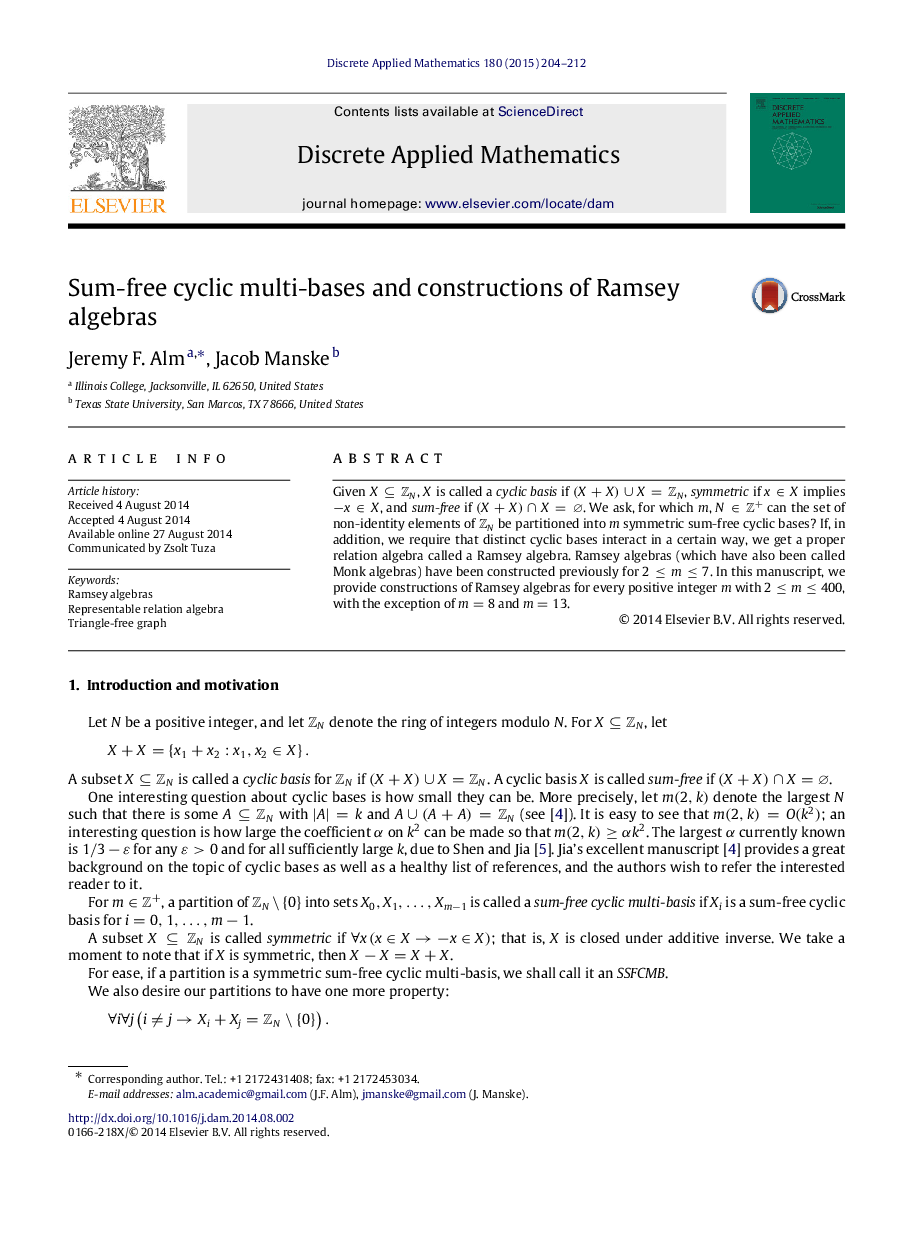| Article ID | Journal | Published Year | Pages | File Type |
|---|---|---|---|---|
| 418665 | Discrete Applied Mathematics | 2015 | 9 Pages |
Abstract
Given X⊆ZNX⊆ZN, XX is called a cyclic basis if (X+X)∪X=ZN(X+X)∪X=ZN, symmetric if x∈Xx∈X implies −x∈X−x∈X, and sum-free if (X+X)∩X=∅(X+X)∩X=∅. We ask, for which mm, N∈Z+N∈Z+ can the set of non-identity elements of ZNZN be partitioned into mm symmetric sum-free cyclic bases? If, in addition, we require that distinct cyclic bases interact in a certain way, we get a proper relation algebra called a Ramsey algebra. Ramsey algebras (which have also been called Monk algebras) have been constructed previously for 2≤m≤72≤m≤7. In this manuscript, we provide constructions of Ramsey algebras for every positive integer mm with 2≤m≤4002≤m≤400, with the exception of m=8m=8 and m=13m=13.
Keywords
Related Topics
Physical Sciences and Engineering
Computer Science
Computational Theory and Mathematics
Authors
Jeremy F. Alm, Jacob Manske,
